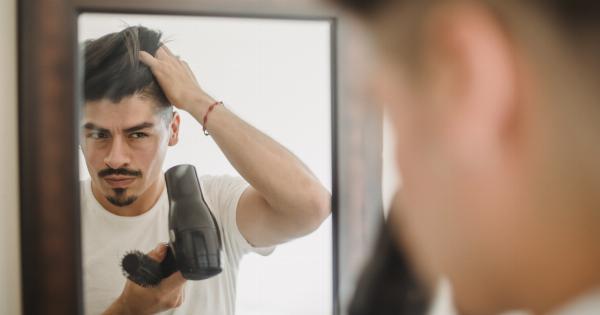Having a head full of healthy, luscious locks is a dream for many. However, achieving and maintaining such voluminous hair can be a constant battle against a variety of factors that contribute to hair loss.
While genetics and hormonal imbalances are often blamed for thinning hair, many people are unaware of the hidden threat that airborne hair loss contributors pose. These unseen culprits can silently wreak havoc on your hair health, leading to significant hair loss and thinner strands.
In this article, we will explore the various airborne factors that can harm your hair and provide you with tips on how to protect your precious tresses.
Hair Loss: Beyond Genetics and Hormones
Hair loss is a complex issue that can be influenced by a combination of genetic and hormonal factors. However, these are not the only villains responsible for diminishing hair volume.
Environmental factors, including the presence of certain airborne substances, can contribute to hair loss. By understanding and addressing these lesser-known contributors, you can take proactive measures to protect your hair.
Indoor Air Pollution: A Hidden Culprit
When we hear the term “pollution,” we typically think of outdoor pollutants like car emissions and industrial smoke. However, indoor air pollution is a silent menace that can adversely affect our hair health.
Common indoor pollutants such as volatile organic compounds (VOCs), formaldehyde, and dust mites can linger in our living spaces, gradually accumulating on our hair and scalp. Over time, these pollutants can clog the hair follicles, hinder hair growth, and lead to hair thinning.
Stress: An Invisible Hair Killer
In today’s fast-paced world, stress has become an unavoidable part of our lives. Whether it’s work-related pressure, financial concerns, or personal issues, chronic stress can wreak havoc on our overall well-being, including our hair health.
When we are stressed, our body releases a hormone called cortisol, which can disrupt the hair growth cycle and lead to hair loss. Additionally, stress-induced behaviors such as excessive hair pulling or twisting can result in a condition called trichotillomania, causing significant hair damage and visible patches of hair loss.
Heating and Styling Tools: A Double-Edged Sword
In pursuit of the perfect hairstyle, many of us subject our hair to intense heat from styling tools like straighteners, curling irons, and blow dryers.
While these tools can help us achieve stunning looks, excessive heat exposure can damage the hair shaft, weaken the strands, and contribute to hair loss over time. The high temperatures strip the hair of its natural moisture and proteins, leaving it brittle, dry, and prone to breakage.
It is essential to balance styling with proper hair care and use heat protectant products to minimize the damage caused by these tools.
Poor Air Quality: The Price We Pay
The air we breathe plays a crucial role in our overall health, and our hair is no exception. Living in areas with high air pollution levels can expose our hair to harmful particles and toxins present in the air.
Chemical pollutants, such as sulfur dioxide, nitrogen dioxide, and particulate matter, can settle on the hair, leading to scalp inflammation, oxidative stress, and hair loss. It is particularly important for those living in heavily polluted areas to take extra care of their hair and scalp.
Nutrition: Fuel for Healthy Hair
The old saying “you are what you eat” holds true for our hair as well. A nutritious diet that includes essential vitamins, minerals, and protein is vital for maintaining healthy hair.
However, poor dietary choices can deprive the hair follicles of essential nutrients, leading to weak and fragile strands. Additionally, crash diets, lack of hydration, and deficiency in vital nutrients like iron, biotin, and zinc can directly contribute to hair loss.
Ensuring a balanced diet rich in fruits, vegetables, lean proteins, and healthy fats can help protect against hair loss caused by nutritional deficiencies.
Dry Indoor Environments: Moisture Matters
Whether it’s due to cold weather or excessive air conditioning, indoor environments tend to have dry air, which can strip the hair of its natural moisture. Dry hair is more susceptible to damage, breakage, and tangling, leading to hair loss.
Maintaining a healthy level of moisture in indoor environments can help keep your hair hydrated, thus reducing the risk of hair loss. Using humidifiers, avoiding excessive heat, and incorporating moisturizing hair care products into your routine can help combat the challenges posed by dry indoor environments.
Allergens and Irritants: Troublemakers in the Air
When it comes to our hair health, it’s not just chemicals and pollutants that pose a threat. Allergens and irritants present in the air can also trigger scalp reactions and cause hair loss.
Common irritants like pollen, pet dander, and certain hair care products can lead to scalp inflammation, itching, and hair damage. For individuals with sensitive skin or allergies, it is crucial to be mindful of the products they use and take steps to minimize exposure to potential allergens.
Protective Measures: Safeguarding Your Tresses
While it may seem daunting to combat the hidden threats to your hair health, there are several steps you can take to protect your precious locks:.
- Invest in an air purifier to remove indoor pollutants and improve air quality.
- Practice stress management techniques such as meditation, yoga, or regular exercise to reduce the impact of cortisol on your hair.
- Limit the use of heating tools and always apply a heat protectant before styling.
- Use a good-quality hairbrush with soft bristles to avoid unnecessary hair breakage.
- Opt for hair care products that are free of harsh chemicals, sulfates, and parabens.
- Protect your hair from environmental pollutants by wearing a hat or scarf when outdoors.
- Maintain a healthy diet rich in vitamins, minerals, and proteins to nourish your hair from within.
- Hydrate your hair by using moisturizing hair masks, conditioners, and oils regularly.
- Keep your scalp clean and free of allergens by washing your hair regularly with mild, hypoallergenic shampoos.
- Visit a dermatologist or trichologist if you notice excessive hair shedding or unusual scalp conditions.
By incorporating these protective measures into your hair care routine, you can mitigate the impact of airborne hair loss contributors and maintain lush, healthy locks.


























